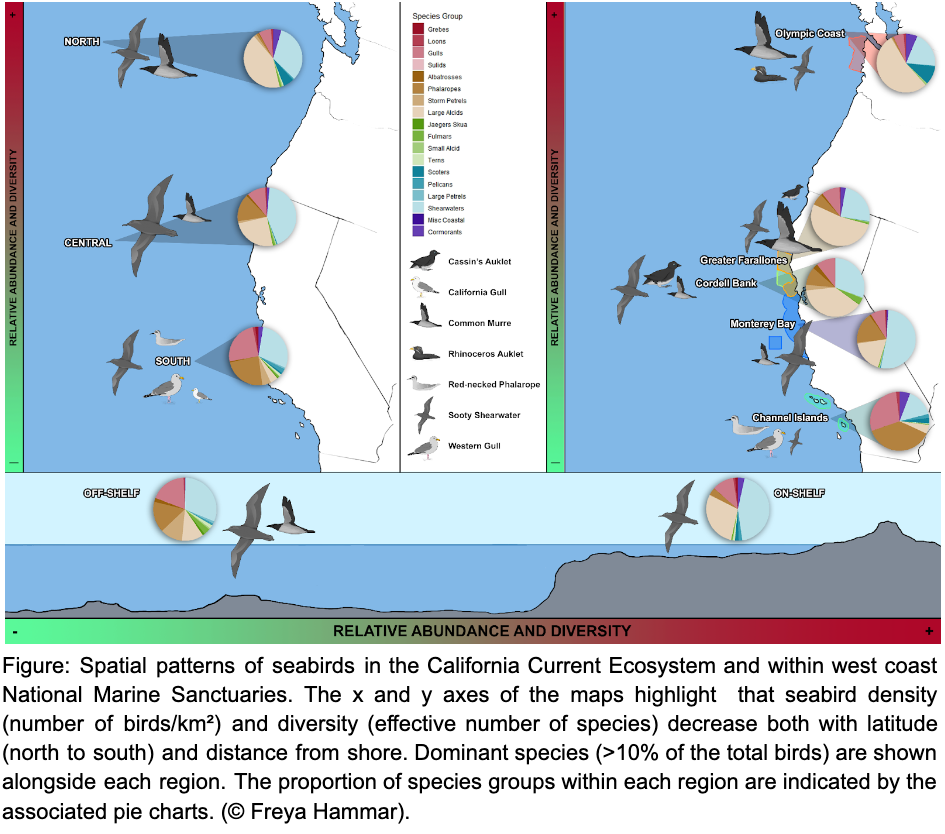The distribution of marine predators, such as seabirds, can reveal areas of heightened ecological importance and reflect underlying prey availability. However understanding predator distributions at sea is typically difficult, costly, and limited in coverage. On the other hand, seabirds are the most visual members of ocean food webs, spending most of their time above the sea surface, and are a prime study group for understanding spatial patterns of marine predators.
The California Current Ecosystem (CCE), a productive eastern boundary current, provides important foraging habitat for resident and migratory marine birds. Within the CCE, there are three unique, biogeographic regions; one in the north, central and south. These regions have distinct upwelling patterns, which affects the distributions of marine organisms. Each of these biogeographic regions host at least one National Marine Sanctuary (NMS), resulting in coverage of diverse habitats by the west coast sanctuary system. The CCE is one of the best-studied regions regarding seabird distributions, yet the patterns of abundance, diversity and community composition at broad, regional, and localized scales were not well understood. Recently, a newly compiled dataset was made available that covers the entire CCE and includes records from 1980 to 2017.

Recent research used this newly available data to test for broad, regional, and localized patterns of the seabirds in the CCE, and compare regions outside of sanctuary boundaries to each of the west coast NMSs. This research found that all five of the NMSs capture higher seabird abundance and diversity than their respective biogeographic regions, yet are comprised of distinct communities. Their placement within each biogeographic region captures a variety of habitat and seabird communities along the U.S. West Coast. In addition, the three central NMS (Monterey Bay, Cordell Bank, and Greater Farallones) are a prime example of how placement of a sanctuary matters, as they are all in the central region but capture distinct components of the central seabird community.
This study also found CCE-wide trends, with abundance and diversity increasing with latitude and decreasing with distance from the coast, and distinct biogeographic-level community composition. This research highlights the importance of data compilation and long-term monitoring, as data becomes richer, we can further understand these patterns. Seabirds are exceedingly sensitive to ocean and food web changes, and such data collection can highlight ecological characteristics, changes, or areas in need of further protections.
The original research article is titled “National Marine Sanctuaries capture enhanced abundance and diversity of the California Current Ecosystem avifauna” and can be found here https://doi.org/10.1016/j.jmarsys.2023.103887